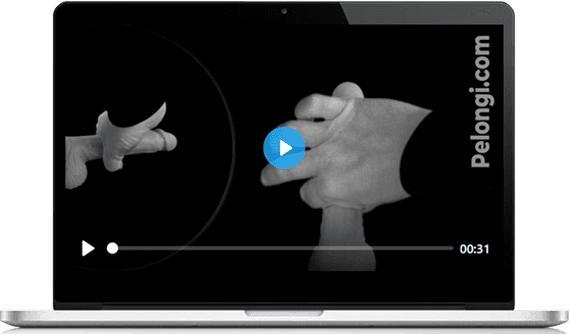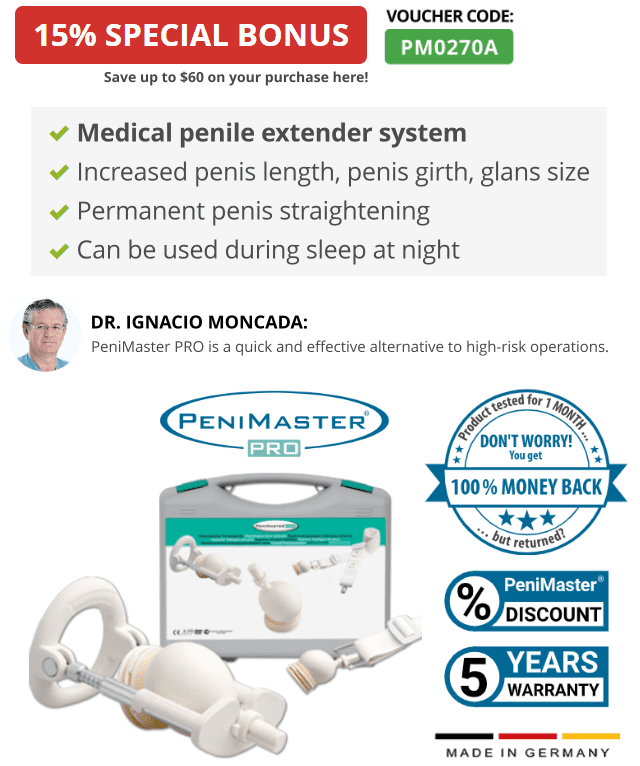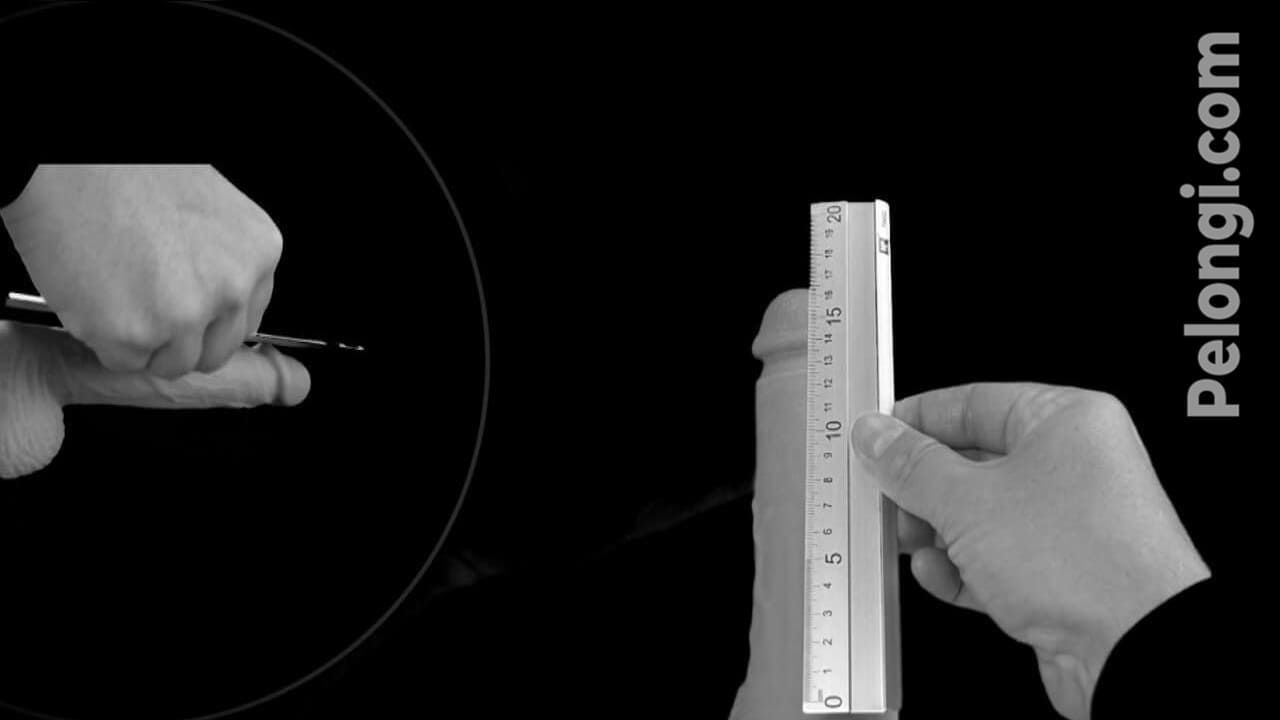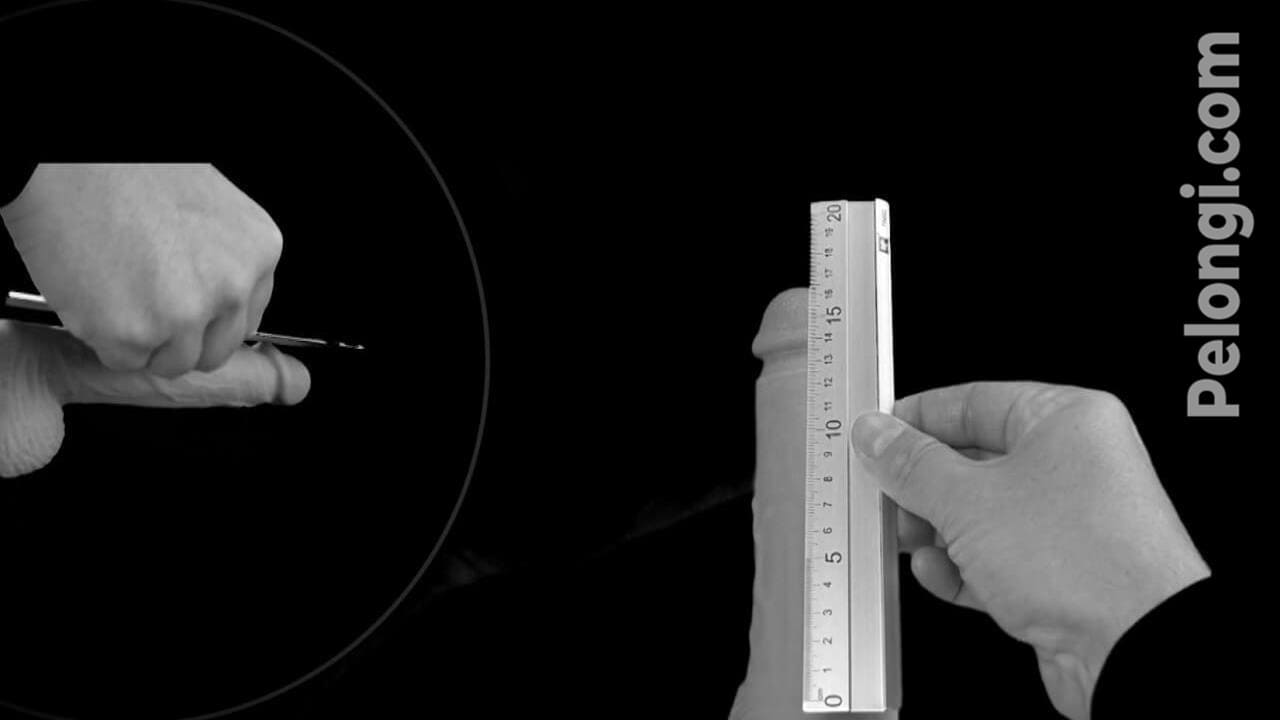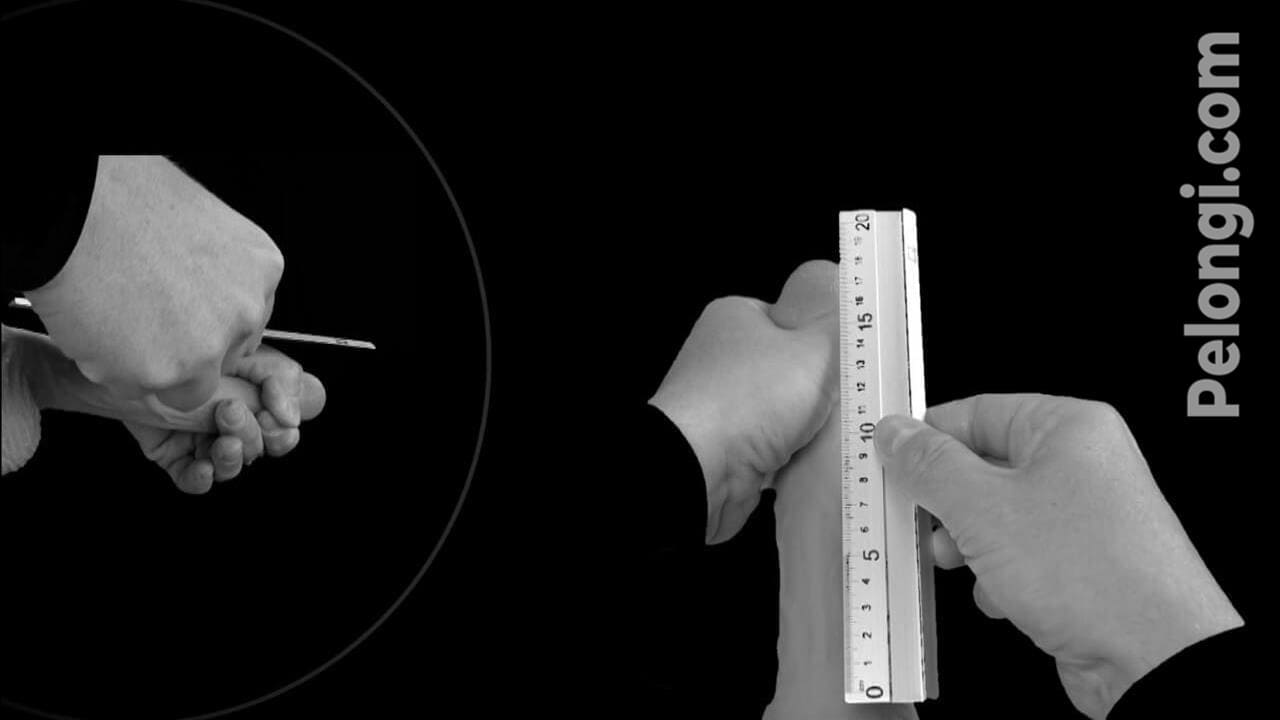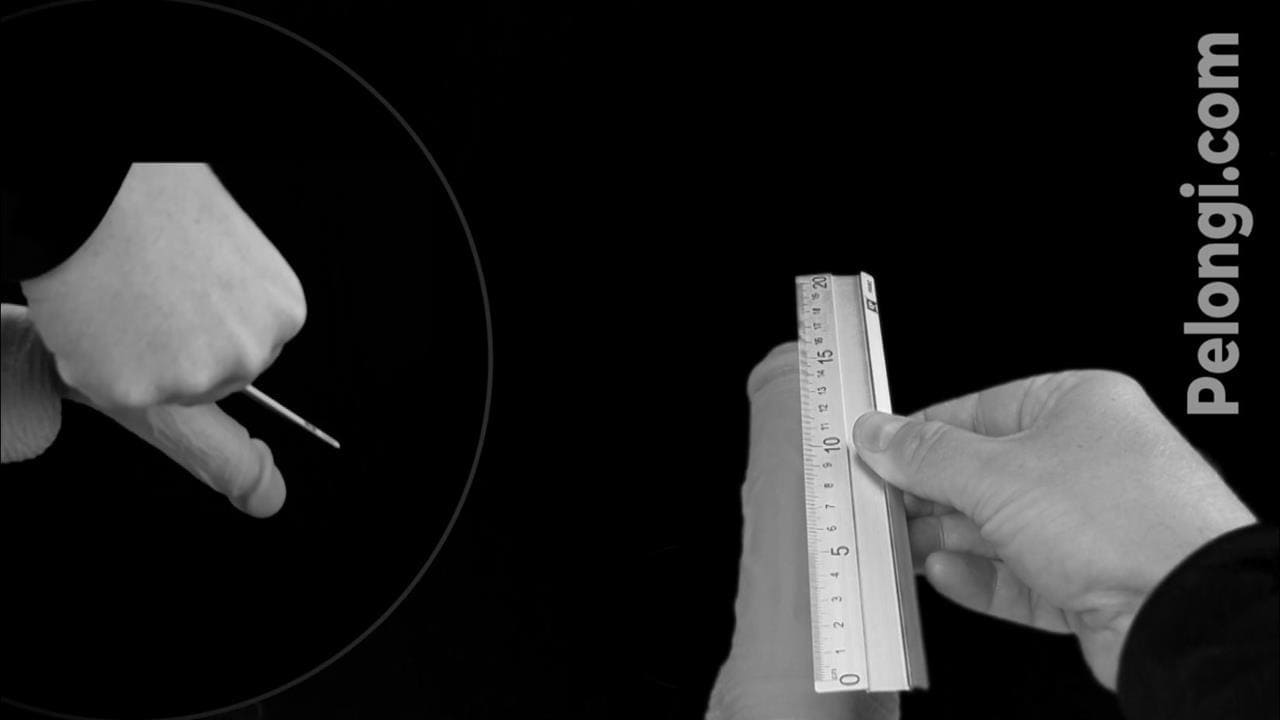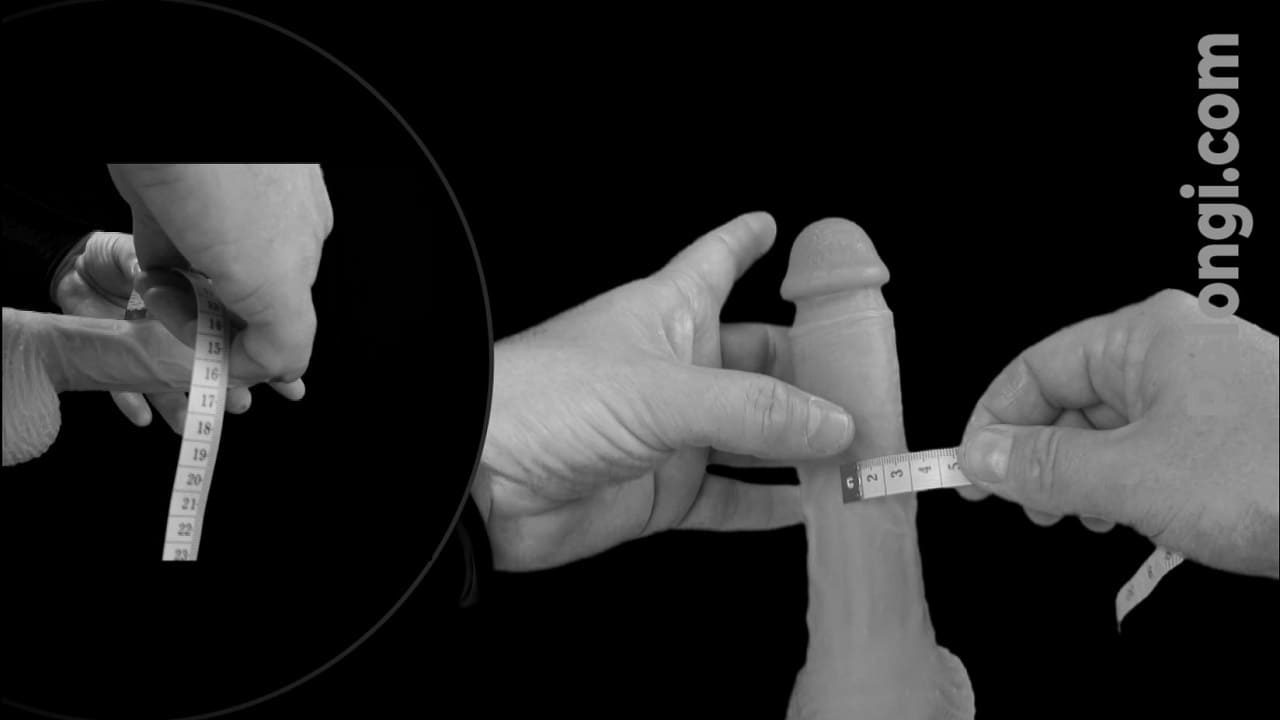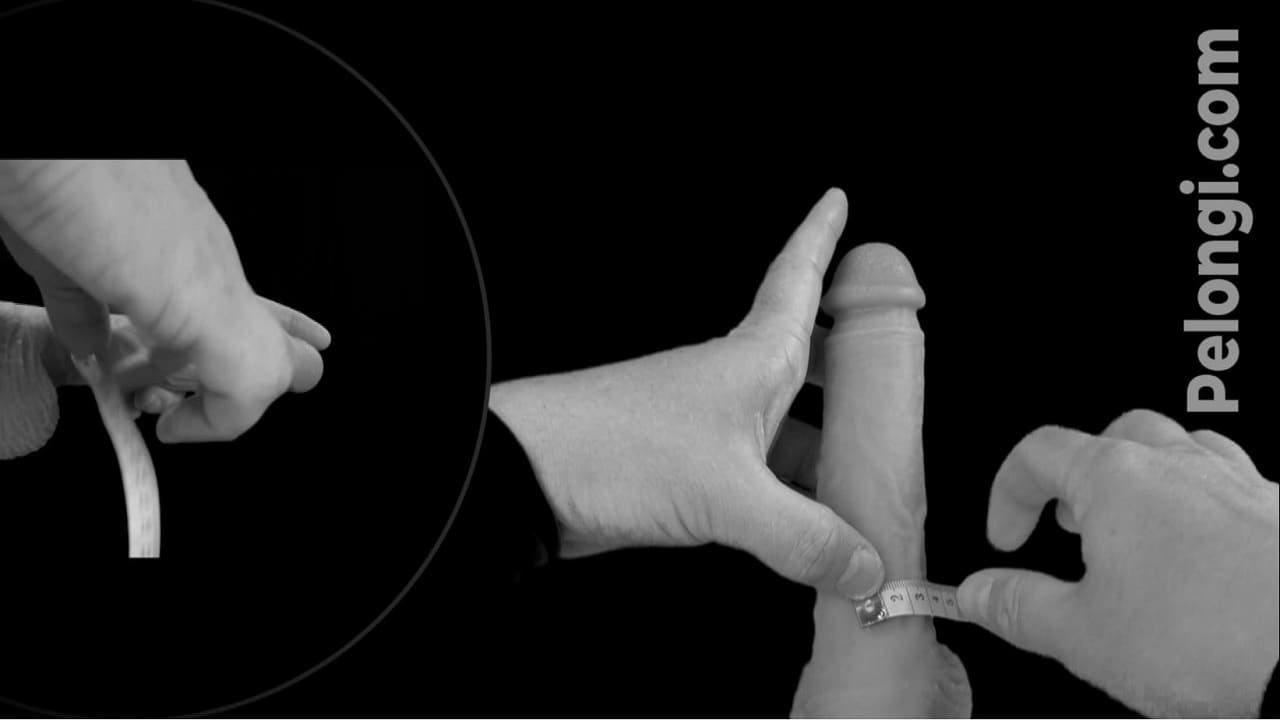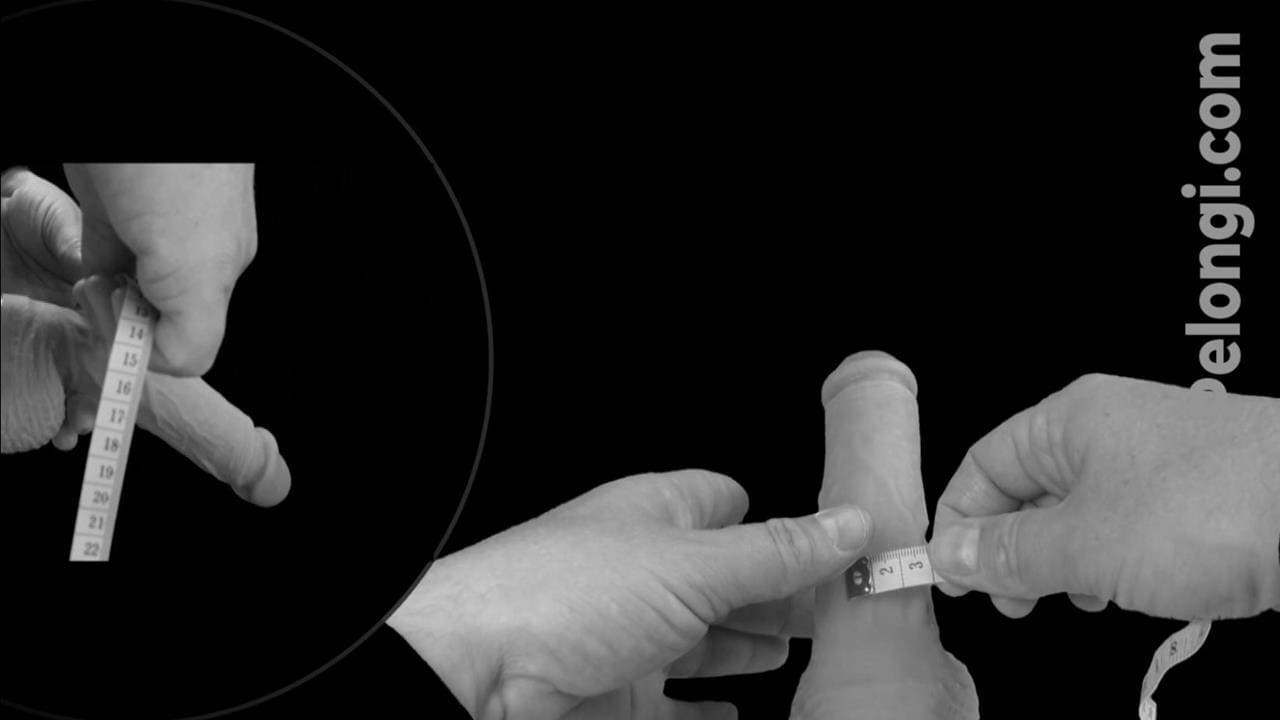Measure penis size Methods to determine penis length and penis girth
Before you start with the penis exercises and penis enlargement videos to increase penis girth, increase penis length and strengthen pelvic floor muscles, you should first measure your penis. This way you can determine exactly which penis size you start the workout to enlarge your penis. The correct measurement is the first step to successful penis enlargement.
There are 7 different methods to measure the penis. Since it depends on the technique, we show you in the following videos how to calculate penis length and penis girth exactly.
— How is a penis measured?
This article focuses with the various penis measurement methods and measurement values that are important for the most accurate and meaningful recording of the gains. In principle, it can be said that every penis enlargement routine stands and falls with a decent penis measurement. From this point of view, the first measurement is the first step of the PE workout. The values recorded are called start values.
1. General information about the measurement
Before you start measuring, you should create the appropriate conditions and acquire the necessary basic information. This chapter gives explanations on suitable measuring tools as well as on different measurement bases, a preferably uniform measuring procedure and recommended measuring intervals.
a.) The necessary measuring tools
First of all, it must be clarified which measuring tools are necessary for a penis measurement. Optimally, this is simply a stable, non-flexible ruler or folding ruler (for length measurements) and a flexible tape measure (for girth measurement). In general, the metric system should be used for measurement, as this allows a more precise and understandable growth recording.
The ruler and the offset scale: When using a ruler, make sure that the non-scaled area in front of the zero is either added to the measurement or removed with a saw (with a wooden ruler, this is usually possible without further ado). When measuring with a folding rule, this problem is generally not encountered because the rule starts immediately with the measuring scale.
Alternative to a tape measure: f you don't have a tape measure at hand, you can also use a piece of string which you wrap around the penis to measure the circumference (see below: "Erect Girth"), mark the point of intersection and then measure from the beginning of the string to the marked point with a ruler. But it is advisable to get a tape measure as soon as possible if you do not have one yet. In case of doubt, a much more precise measurement is possible.
b.) The bases of measurement
The measurement of the erect penis can basically be based on two different principles: the natural measurement or the maximum measurement. Which of the two is used for your own measured value recording is up to each user.However, once you have chosen one of them, you should stick with it throughout your entire penis enlargement routine - otherwise all subsequent measurements will not be comparable with the previous ones. In the following, the two different principles are explained in more detail.
Natural measurement: Natural measurement is the classic and most common measurement basis for PE workout. The measured values of a natural erection are recorded. Of course, one tries to achieve the best possible erection (and can also rely on external stimuli such as manual stimulation or erotic films), but does not exaggerate it by maximizing it (see "Maximum value measurement") or even with blood congestion aids (see "Maximum value measurement with aids"). In natural measurement, however, the current erection quality has a direct influence on the measurement result.
Maximum value measurement: The maximum value measurement (also called peak measurement) tries to (artificially) maximize the erection while taking measurements. In this way, the highest possible expression of all values that can currently be achieved with the body's own means is specifically brought about and recorded as a measured value (regardless of how short this erection intensity can ultimately be maintained). These maximum values are then achieved not only by natural erotic stimuli (masturbation, erotic films), but also by active use of the Kegel exercise, which produces a short-term erection maximization beyond the usual level.
Maximum value measurement with aids: The maximum value measurement with auxiliary means goes one step further. With her the respective erection maximization is reached with any external aids (e.g. blood circulation enhancer, penis rings or even vacuum pumps). The advantage of this measurement basis is that (potential) increases are detected earlier and more pronounced than with natural measurement. The disadvantage, however, is that the entire influence of the natural erection quality (EQ) is excluded or at least severely curtailed in this measurement basis. So theoretically it could be that the EQ is actually considerably reduced and the natural measurement values are reduced, but the maximum measurement does not reflect this. Thus, with this measurement method it is questionable whether the measured gains really exist - or only potentially (i.e. within the framework of an excessive EQ). Another problem is that it is never quite clear to what degree the EQ should be artificially maximized. More precisely: Is only one penis ring taken to increase the blood congestion? Or do you also take blood circulation stimulants? If so, in what dosage? Or do you even use a vacuum pump and then read the expansion inside the pump? Then the question arises, at how much effective negative pressure one reads. Overall, it is therefore very difficult to determine what can ultimately be considered the actual maximum, once one has started to exploit this maximum through various influences. The maximum value measurement is therefore used much less frequently than the natural measurement.
c.) Minimize distorting influences
When measuring the penis, two simple guidelines apply: The measured values should be recorded accurately and they should be comparable with each other. What does that mean in detail? When in doubt, every user measures something differently - the values of different penis enlargement users among themselves, so they are never comparable 1:1. But this is unnecessary anyway, because the PE is first and foremost about analysing one's own progress and workout. It is only important that the own measured values are comparable with each other. When measuring, this should therefore be done under the same conditions each time, so that the respective measured value can be reliably compared with the measurement that will follow in a few months. Apart from adhering to the measurement methods described in more detail in Chapters 2a to 2d, the following should be noted:
- Before a measurement, 3-7 days without workout should pass in order to let the temporary gains subside and if possible only actual gains should be considered in the measurement.
- Each measured value should be recorded several times on the day of measurement and at different times of the day (the recorded measured value is then either the mean value or the most frequently confirmed result).
- All measurements should be taken in the same body position (insofar as posture can influence and distort the measurements), with clear guidelines: For example, place your back, pelvis and legs against the wall, feet hip-wide apart - then record all values while standing.
This way you can be quite sure that your own measurements are representative and reproducible.
d.) How regularly should I measure and check my gains?
Especially for penis enlargement beginners there is the attraction of constantly measuring to check the effectiveness of the workout. Instead, however, it is advisable: After measuring the initial values, you should not measure again for at least 3 months (this would also be the minimum interval of the beginner program). The same applies to later stages of workout, as the interval of three months has become accepted as a minimum to allow a workout program enough time to take effect. Real gains (unlike short-term tissue stretching, so-called temporary gains) simply take time - and they never occur within a few days. If measurements are taken before the end of the three months, either euphoric misconceptions and expectations can arise (if an increase is recorded early on) or motivation can be permanently reduced (if a hoped-for increase does not occur). In the end, both will only harm and, in the worst case, will cause the existing (and possibly coherent) workout program to be hastily modified. Measurement intervals of at least 3 months are therefore a good measure, many users (especially experienced users) even record their values only every 6 months. In general, the measuring interval beyond the beginner's program often depends on the respective workout stage.
2. The four standard measured values
Following are the four values that are considered the standard of measurement for analyzing workout and are also generally the most important in the penis enlargement field. Every beginner should make sure that he records all four values thoroughly and accurately in order to be able to determine the progress of his workout later on.
a.) Bone-Pressed Flaccid Stretched Length (BPFSL)
The BPFSL is one of the most important measured values, but at the same time the most unpleasant to record. It is of crucial importance in the later workout analysis, so you should take care to measure it as accurately as possible. It determines the maximum vertical extension of the penis and is generally slightly larger than BPEL (usually 0.2" to 0.6").
b.) Bone-Pressed Erect Length (BPEL)
The BPEL indicates the erect length of the penis, whereby the ruler is pressed down to the pubic bone and thus the inner length of the penis is also included in the measurement. This prevents the influence of possible weight fluctuations between two measurement dates or changes in the fat pad at the base of the penis. It is based on various penis measuring studies and is considered the most reliable length value.
c.) None-Bone-Pressed Erect Length (NBPEL)
The NBPEL is the least interesting for the analysis of the workout, but in other respects it contains some important information. On the one hand, it is the optical length value, i.e. the measured value that provides information about the actual length of the penis protruding from the body and its optical appearance. On the other hand, the difference between BPEL and NBPEL provides information about the fat pad, the skin and fat accumulation on the lower abdomen above the root of the penis. Usually this difference is within a range of 0.6" to 1". If it is above this level, this may, under certain circumstances, mean further growth potential in terms of weight reduction.
d.) Erect Girth (EG)
The EG is the measure of the penis girth and thus gives very accurate information about the width or thickness of the penis. Its recording is divided into three categories: Base, Mid and Top. In most cases, however, not all three categories, but only one or two are listed as measured values. The most common method of measurement is at the root of the penis (EG-base) or the "thickest part of the penis". Sometimes it is also measured at the middle of the shaft (EG-mid), which particularly represents the optical characteristics. A measurement at the most extensive part of the glans (EG-top) is usually only useful if the own program is especially aimed at the penis girth and therefore a measurement as exact as possible in this respect should be made.
3. Optional measured values
The following measured values measure the flaccid penis and are comparatively unimportant in their importance for workout. Meanwhile, they are recommended for users who are particularly dissatisfied with their flaccid size and hope to increase these values through workout. In general, however, it should be said that the measurement of the flaccid penis is much less accurate than that of the erect values. The flaccid size is dependent on various external and internal factors (e.g. general body condition, emotional state, ambient temperature, etc.), which can cause the measurement results to fluctuate considerably. The values are therefore most likely to be recorded n a spectrum (e.g. not FL = 3.1", but rather FL = 2.7" to 3.5"). This is even more true for blood penises than for flesh penises. Also for the measurement of the flaccid penis, the multiple measurement at different times of the day, as explained in chapter 1c, is always useful in order to form a corresponding average result.
a.) FL - Flaccid Length
The FL (sometimes FH, for "Flaccid Hang" or NBPFL for "Non Bone Pressed Flaccid Length") is the flaccid length value of the penis. It is even more variable and dependent on external influences than the FG (Flaccid Girth). The measurement result should be given as a spectrum, since a constantly reproducible measurement in inches is hardly possible.
b.) FG - Flaccid Girth
The FG is the flaccid girth value of the penis. It is somewhat more stable than the FL, but can also fluctuate in its expression due to external influences and the respective blood circulation situation. Here too, a measurement in inches that can be reproduced at any time is hardly possible.


